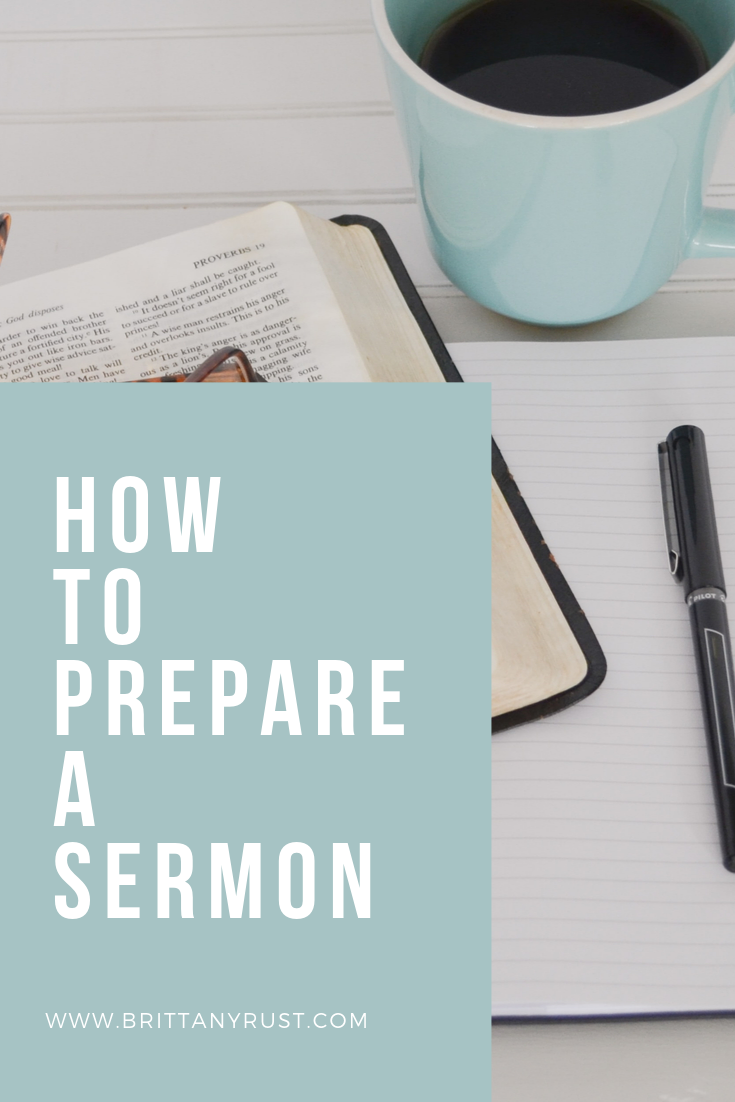How to Prepare a Sermon
What Does the Bible Say About Teaching God’s Word?
The opportunity to teach and communicate God’s Word is no light matter. This sacred task should be done with great respect for God and Scripture; a role completed with diligence.
“Not many of you should become teachers, my brothers, for you know that we who teach will be judged with greater strictness.”
“Do your best to present yourself to God as one approved, a worker who has no need to be ashamed, rightly handling the word of truth.”
It’s not about you or the stage or a microphone—a platform to toil for—but is about one thing: pointing people to Jesus.
The heart and goal of every sermon is to communicate the Gospel with authenticity and accuracy, and no matter what the topic is, should always point people back to Christ. If God has opened an opportunity for you to teach His Word, do it with great respect and honor.
Before, During, and After
A sermon should be bathed in prayer. It is through prayer you connect with God and connect with His heart for this sermon and the people who will hear it. Operating apart from prayer and in your own strength will leave you disconnected from the Source. The truth is, you can’t affect real change in anyone’s heart; only Jesus can do that. So go to Him and walk through the process with God.
Sermon Preparation
Full disclosure: I prefer to teach expositorally. This means that I prefer to take a passage and teach verse by verse. I find that this gives people a more thorough knowledge of the Word of God. If you are teaching topically, you will likely tweak the steps below. Instead of teaching a passage, and thus needing to study it, you’ll likely pick your topic and then find verses to support it.
1. Choose the Passage.
Find the selection of verses you’d like to teach.
2. Study the Passage and Gather Notes.
When I study a passage, I prefer to absorb the material the best I can and allow the Holy Spirit to minister to me about the meaning. Then, I’ll turn to commentaries and studies. With that said, here are some questions and thoughts to keep in mind while studying the passage:
How does the passage relate to the text around it? It’s important to examine and teach God’s Word in context. So, don’t just study that passage, but explore the theme of that book and surrounding chapters.
What don’t you understand? What is in this passage that doesn’t quite make sense to you? Identify these questions and search for understanding. If you’re not sure, the listener certainly won’t be.
What is the writer talking about? This is your subject; the heart of the message.
What notes and observations is the writer making about the subject? This is the complement.
3. Connect the Dots.
This is where you start piecing the puzzle together. How do the parts relate and paint a picture? You’ll want to ask these basic questions: who, what, when, where, why, and how? They help you narrow in on the subject. Really break apart the passage and then start piecing it back together.
4. Dissect the Passage.
Ask these three development questions:
Explain it: “What does this mean?”
Prove it: “Is it true?”
Apply it: “What difference does it make?”
5. Develop the Main Idea.
What is the main idea, and how can you communicate it in the most memorable way?
6. Determine the Purpose of the Sermon.
This is where you determine what you expect the listener to learn and walk away with. While the Bible is written to a certain audience long gone, its truths resonate today. Give something tangible your listener can take with them and put into practice.
7. Develop an Outline.
Develop an Intro, a Body, and a Conclusion. Also, think about how you’d like to direct people during the closing prayer/altar time. Here, you want to bullet out your points, verses, quotes, and any other tidbit that’s important to the message.
Now, an Intro should draw people in and let the listener know where they will be taken over the course of the sermon. You can share a story, a quote, something funny—as long as it catches the ear. And use that to communicate the big idea.
With the conclusion, communicate that main idea again. What is it you want people to walk away with? Repetition can be incredibly helpful to the listening ear.
8. Write the Sermon.
Fill in the blanks. Write out the sermon in its entirety. And remember: be sure to bring the topic back to Jesus and point to Him in the message. Ask yourself: what am I saying about Jesus, and is this sermon pointing people to Him?
* I have included a PDF below that has notes and a final sermon outline for a teaching I recently did, just to give you an example.
9. Practice.
The more you read, go over, and practice the sermon, the better you will know it. And the better you know it, the more it will come across natural to the audience. It’s never fun to watch someone preach a sermon that is read from notes. Free yourself up to be more engaging with the audience!
Resources I Use in Sermon Prep
Bible (I use the ESV Preaching Bible)
How to Read the Bible for All It’s Worth by Fee and Stuart
Biblical Preaching by Haddon W. Robinson (Much of the content above was drawn from this book)
Christ-Centered Preaching by Bryan Chapell


